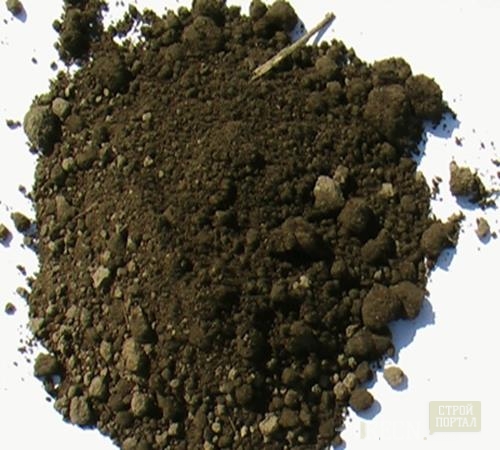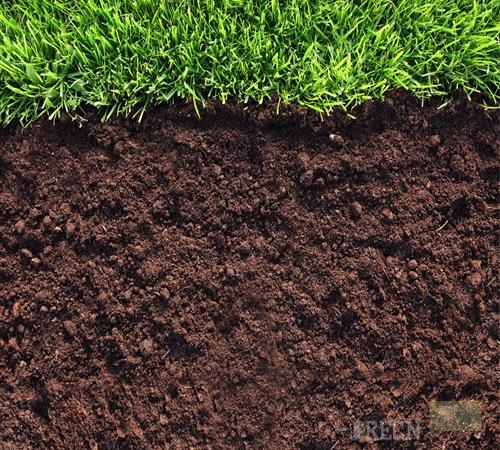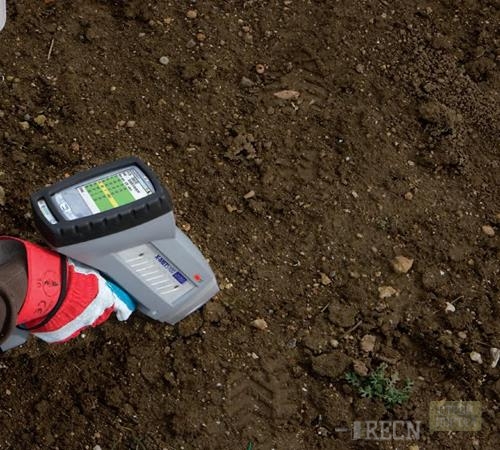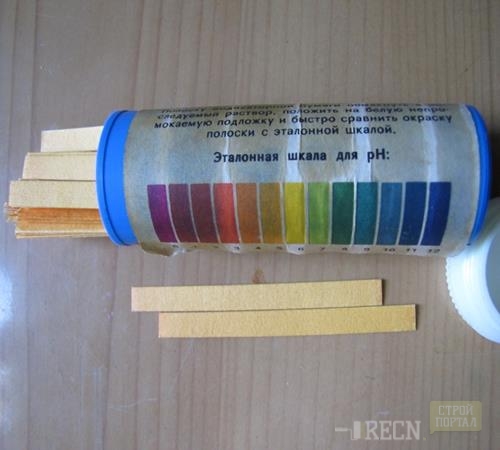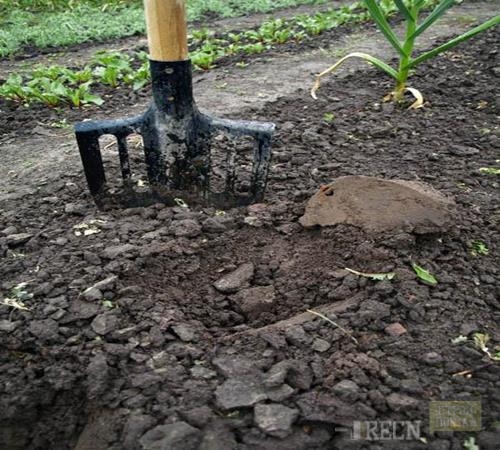
How to determine the acidity of the soil in the country area Plot.

The germination of garden culture depends on the quality of the soil, and its taste. Such a parameter as acidity is of great importance. Consider what it is and how to measure and adjust the level of soil acidity.
Content
What is soil acidity
Acidness is a parameter that is responsible for the ability of soils to show the properties of acids. In other words, acidity affects the period of decay of beneficial minerals, fertilizers and oxidation of plant roots.
The oxidation of the roots is a very detrimental process, firstly, it harms the root system itself, secondly, the roots absorb acid inside the stem, which in turn leads to the fading of the plant or slow development. In addition, plant fruits may have a pronounced sour taste.
Measure acidity in two parameters:
- absolute
- potential.
Absolute acidity is the ratio of hydrogen ions and ion hydroxide, it is measured in the pH. In the neutral medium, these ions in any test solution equally, but if hydrogen ions are greater, it indicates the presence of an acidic environment. The pH level directly characterizes the acidity of the soil.
Potential acidity is measured by introducing additional ions into a solution that show a certain progression of acidity development. This parameter is necessary in order to draw conclusions about soils that are planned to be used throughout the long period of time. If there is a tendency to permanent soil oxidation, it means that it is necessary to intervene in the process and make certain supplements for the soil (the studies are relevant for farms, where the area being processed is sufficiently large and the decrease in acidity will cost a sufficiently large amount).
On the other hand, to do completely neutral or, on the contrary, alkaline ground, too, it is also impossible. Of course, excess acidity harms plants, but its moderate indicator contributes to the normal decay process and the absorption of useful trace elements. Purely alkaline soils will not kill the plant, but will make it the fruit of poisonous, rich salts and heavy metals. Neutral soils are characterized by slow development of plants.
Continuing the topic of acidity types should be mentioned another one. The hydrolytic acidity of the soil, if not too much to go into the chemistry of the process, indicates which environment the water acquires after interaction with the soil. In practice, this means that at high hydrolytic acidity on the roots of plants, a more acidic medium is affected than pH of the soil. The process is more interesting for chemists than farmers, as in economic activity it affects exclusively on rice shoots.
Types of soil acidity
The soil acidity table gives the following distinction in accordance with the PH level:
- 14 and above - the most alkaline,
- 10-13 - strongly alkaline,
- 9 - alkaline,
- 8 - weakly,
- 7 - neutral,
- 6 - weakness,
- 5 - sour,
- 4 - 2 strongly sour,
- 1 - the most sour.
Each of these categories allows you to distinguish certain varieties of cultivated plants that love the specified acid-alkaline modes.
In the most alkalic and most acidic soils, exclusively plants are growing, which are usually either poisonous or not suitable for taste. These types of soils must be in order.
Strongly alkaline and alkaline soils are suitable only for the growing herbs and cereals. But such nutrition is likely to have a negative impact on the taste of meat and milk.
Low-alkaline soils are ideal for sunflower, cannabis, sugar beet, alfalfa and most types of cereals.
Neutral soils are suitable for legume crops. At the same time do not forget about the fertilizers.
Weakly acidic and acidic soils are ideal for most vegetables. With this type of soil, even the minimum number of fertilizers will be enough for a good plant bushes. The same soils are ideal for most types of colors (except tropical).
The only culture that loves and can grow only in very acidic soils is a tea bush.
Thus, the determination of soil acidity clearly shows the quality of the soil and its suitability for disembarking of certain crops. Naturally, it is only one of the large number of parameters, but it is most important.
How to find out the acidity of soil
As we found out, the pH level is a very important indicator that must be kept under control. In order to determine the type of acidity at home:
- special device
- indicator paper
- example.
The instrument for determining the level of acidity is called the "soil acidity meter". The most famous model "ICP - Delta", but today there are many other options. The device of the device is sufficient:
- tube-probe,
- charged cathodes
- trap
- box,
- interface.
The probe is lowered for one minute to the soil so that the codes can enter into a kind of electrolysis reaction, due to which the trap compare the number of hydrogen ions and the ion hydroxide and will derive the result to the interface. Thus, the device measures the absolute pH.
Excellent Soil Acid Indicator - Lacmus Paper. It is freely sold on the Internet, specialized chemical stores or, as a last resort, from any chemistry teacher. As a rule, the label is indicated on the box, but if not, the distribution of colors are as follows:
- from bright red to yellowish - acidic soil (the brighter the red color, that acid is soil),
- from greenish to dark blue - alkaline (the closer to dark blue, the more alkali).
In order to carry out experience, it is enough to take a hassle of the earth (from a depth of 3-6 cm) and breed it with water. The ratio of 1: 2.5 for ordinary soils and 1:25 - for peat. Next, a glass or wooden wand must be dissolved with the ground and then omit the indicator. It is painted in a few seconds. The only drawback of this method is difficult to see the exact pH level.
If the level of acidity needs to be known only approximately (for growing colors or utility farming), then it is enough to carry out an elementary experiment:
- take a hassle of land from the surface and from a depth of 5-6 cm,
- mix,
- purchase on a wooden or glass surface,
- pour one tablespoon of ordinary vinegar from above.
The results are manifested in three types:
- lack of reaction
- weak hissing and appearance of bubbles,
- strong hissing and bubble of soil.
The lack of reaction means that there are already a lot of acid in the ground, such a soil must be enriched with alkali-containing substances.
Weak hissing or appearance of small bubbles indicates a neutral soil or with a minor amount of alkalis.
Strong hissing - the result of the reaction of vinegar and alkali. This means that the soil needs to oxidize.
A peculiar variation of this experiment is the use of grape juice. It is necessary to dial the floor of a glass of juice and throw a small lump of the earth there. If the color has changed, and bubbles appeared on the surface, it means there are alkali in the soil (the same and in relation to lemon juice and acidic milk, but the concentration should be more. These experiments are interested in showing a child, since you have a small miracle in your hands) .
How to normalize primer
Speaking of acidity, it is impossible to disregard such an important question as the normalization of the soil. Of course, this is an extremely extensive question, but we will try to illuminate it at least briefly.
In order to reduce acidity, you need alkali. In nature, it is most of all in lime and chalk. In addition, both substances are rich in useful trace elements and fertilize the soil well. Recommended to use the following proportions:
- for the most acidic - 0.6 kg / m 2,
- for strongly acidic - 0.4 kg / m 2,
- for acid - 0.3 kg / m 2,
- for weakly acids - 0.2 kg / m 2.
If there are no specified substances at hand, but I don't want to spend money on them, an ordinary woody ash is perfect (the ash from the leaves does not fit). But its concentration must be increased twice from the specified values.
If the task is to increase acidity, then it will already have to work out. The easiest way to fertilize the soil cheese or humus. A faster and qualitative method - pour a plot with a weak solution of manganese. The only drawback is only for a while normalizes the pH level. In order to achieve permanent results, it is necessary to carry out a procedure 4-5 times, with a minimum of 15-20 cm. After each acidity increases, it is necessary to check the pH level so as not to overdo it.




